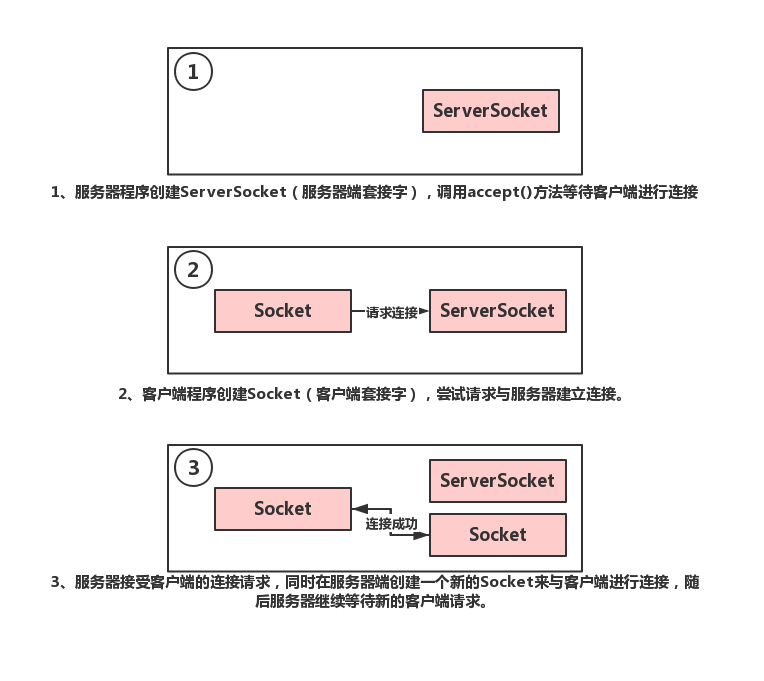Java中有界隊列的飽和策略(reject policy)原理解析
我們在使用ExecutorService的時候知道,在ExecutorService中有個一個Queue來保存提交的任務(wù),通過不同的構(gòu)造函數(shù),我們可以創(chuàng)建無界的隊列(ExecutorService.newCachedThreadPool)和有界的隊列(ExecutorService newFixedThreadPool(int nThreads))。
無界隊列很好理解,我們可以無限制的向ExecutorService提交任務(wù)。那么對于有界隊列來說,如果隊列滿了該怎么處理呢?
今天我們要介紹一下java中ExecutorService的飽和策略(reject policy)。
以ExecutorService的具體實現(xiàn)ThreadPoolExecutor來說,它定義了4種飽和策略。分別是AbortPolicy,DiscardPolicy,DiscardOldestPolicy和CallerRunsPolicy。
如果要在ThreadPoolExecutor中設(shè)定飽和策略可以調(diào)用setRejectedExecutionHandler方法,如下所示:
ThreadPoolExecutor threadPoolExecutor= new ThreadPoolExecutor(5, 10, 10, TimeUnit.SECONDS, new LinkedBlockingDeque<Runnable>(20)); threadPoolExecutor.setRejectedExecutionHandler(new ThreadPoolExecutor.AbortPolicy() );
上面的例子中我們定義了一個初始5個,最大10個工作線程的Thread Pool,并且定義其中的Queue的容量是20。如果提交的任務(wù)超出了容量,則會使用AbortPolicy策略。
AbortPolicy
AbortPolicy意思是如果隊列滿了,最新的提交任務(wù)將會被拒絕,并拋出RejectedExecutionException異常:
public static class AbortPolicy implements RejectedExecutionHandler { /** * Creates an {@code AbortPolicy}. */ public AbortPolicy() { } /** * Always throws RejectedExecutionException. * * @param r the runnable task requested to be executed * @param e the executor attempting to execute this task * @throws RejectedExecutionException always */ public void rejectedExecution(Runnable r, ThreadPoolExecutor e) { throw new RejectedExecutionException('Task ' + r.toString() + ' rejected from ' + e.toString()); } }
上面的代碼中,rejectedExecution方法中我們直接拋出了RejectedExecutionException異常。
DiscardPolicy
DiscardPolicy將會悄悄的丟棄提交的任務(wù),而不報任何異常。
public static class DiscardPolicy implements RejectedExecutionHandler { /** * Creates a {@code DiscardPolicy}. */ public DiscardPolicy() { } /** * Does nothing, which has the effect of discarding task r. * * @param r the runnable task requested to be executed * @param e the executor attempting to execute this task */ public void rejectedExecution(Runnable r, ThreadPoolExecutor e) { } }
DiscardOldestPolicy
DiscardOldestPolicy將會丟棄最老的任務(wù),保存最新插入的任務(wù)。
public static class DiscardOldestPolicy implements RejectedExecutionHandler { /** * Creates a {@code DiscardOldestPolicy} for the given executor. */ public DiscardOldestPolicy() { } /** * Obtains and ignores the next task that the executor * would otherwise execute, if one is immediately available, * and then retries execution of task r, unless the executor * is shut down, in which case task r is instead discarded. * * @param r the runnable task requested to be executed * @param e the executor attempting to execute this task */ public void rejectedExecution(Runnable r, ThreadPoolExecutor e) { if (!e.isShutdown()) {e.getQueue().poll();e.execute(r); } } }
我們看到在rejectedExecution方法中,poll了最老的一個任務(wù),然后使用ThreadPoolExecutor提交了一個最新的任務(wù)。
CallerRunsPolicy
CallerRunsPolicy和其他的幾個策略不同,它既不會拋棄任務(wù),也不會拋出異常,而是將任務(wù)回退給調(diào)用者,使用調(diào)用者的線程來執(zhí)行任務(wù),從而降低調(diào)用者的調(diào)用速度。我們看下是怎么實現(xiàn)的:
public static class CallerRunsPolicy implements RejectedExecutionHandler { /** * Creates a {@code CallerRunsPolicy}. */ public CallerRunsPolicy() { } /** * Executes task r in the caller’s thread, unless the executor * has been shut down, in which case the task is discarded. * * @param r the runnable task requested to be executed * @param e the executor attempting to execute this task */ public void rejectedExecution(Runnable r, ThreadPoolExecutor e) { if (!e.isShutdown()) {r.run(); } } }
在rejectedExecution方法中,直接調(diào)用了 r.run()方法,這會導(dǎo)致該方法直接在調(diào)用者的主線程中執(zhí)行,而不是在線程池中執(zhí)行。從而導(dǎo)致主線程在該任務(wù)執(zhí)行結(jié)束之前不能提交任何任務(wù)。從而有效的阻止了任務(wù)的提交。
使用Semaphore
如果我們并沒有定義飽和策略,那么有沒有什么方法來控制任務(wù)的提交速度呢?考慮下之前我們講到的Semaphore,我們可以指定一定的資源信號量來控制任務(wù)的提交,如下所示:
public class SemaphoreUsage { private final Executor executor; private final Semaphore semaphore; public SemaphoreUsage(Executor executor, int count) { this.executor = executor; this.semaphore = new Semaphore(count); } public void submitTask(final Runnable command) throws InterruptedException { semaphore.acquire(); try { executor.execute(() -> { try { command.run(); } finally { semaphore.release(); } } ); } catch (RejectedExecutionException e) { semaphore.release(); } }}
本文的例子可參考https://github.com/ddean2009/learn-java-concurrency/tree/master/rejectPolicy
以上就是本文的全部內(nèi)容,希望對大家的學(xué)習(xí)有所幫助,也希望大家多多支持好吧啦網(wǎng)。
相關(guān)文章:
1. idea設(shè)置提示不區(qū)分大小寫的方法2. Java利用TCP協(xié)議實現(xiàn)客戶端與服務(wù)器通信(附通信源碼)3. 使用AJAX(包含正則表達式)驗證用戶登錄的步驟4. 利用ajax+php實現(xiàn)商品價格計算5. IDEA 2020.1.2 安裝教程附破解教程詳解6. JS圖片懶加載庫VueLazyLoad詳解7. Java PreparedStatement用法詳解8. django queryset相加和篩選教程9. Spring如何集成ibatis項目并實現(xiàn)dao層基類封裝10. IntelliJ IDEA導(dǎo)出項目的方法

 網(wǎng)公網(wǎng)安備
網(wǎng)公網(wǎng)安備